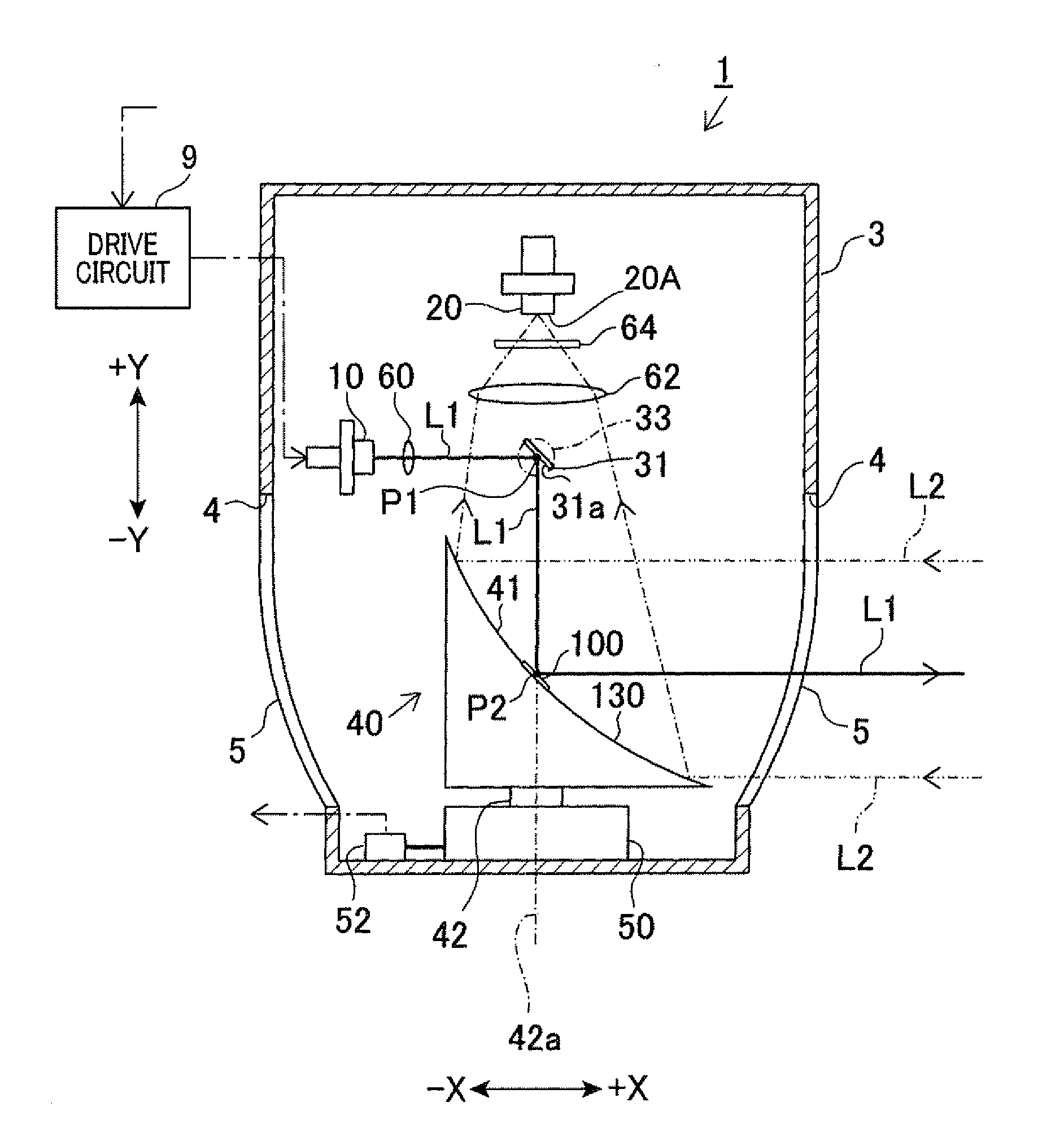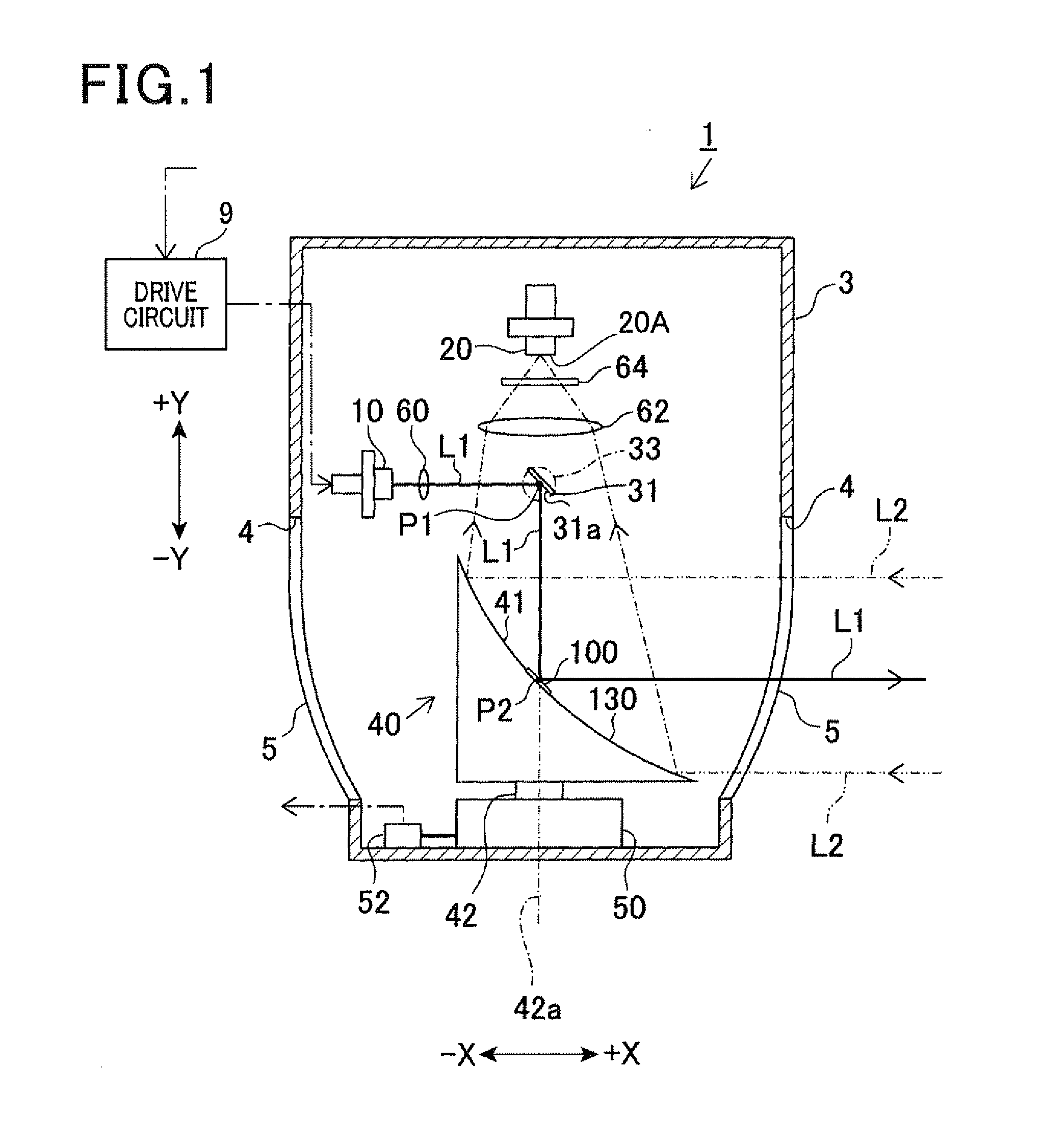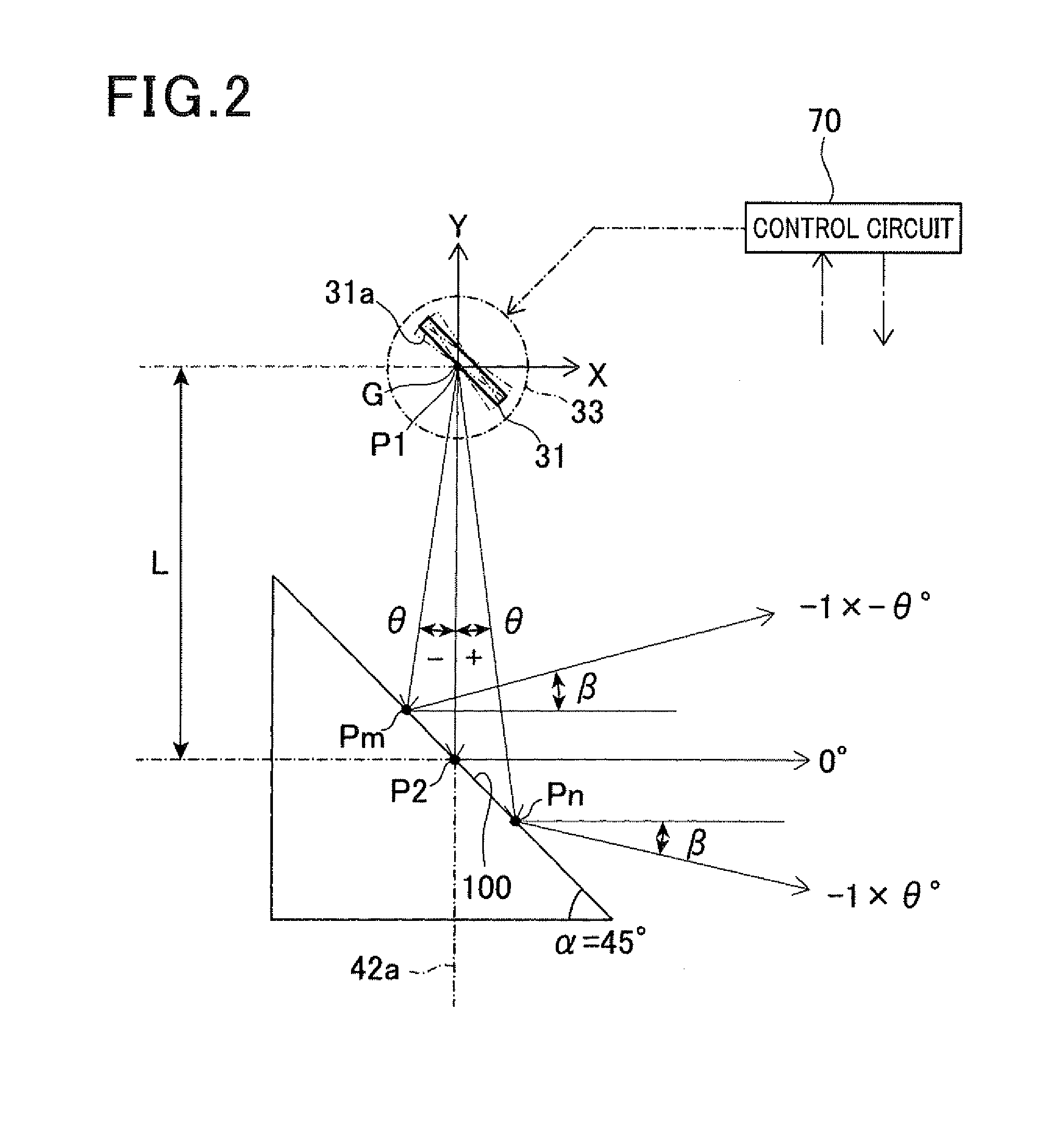Laser radar for three-dimensional scanning
a laser radar and three-dimensional scanning technology, applied in the direction of distance measurement, instruments, surveying and navigation, etc., can solve the problems of difficult three-dimensional detection of targets, limited detection range, and inability to detect laser beams reflected externally from concave mirrors out of scan planes. the effect of reducing the load
- Summary
- Abstract
- Description
- Claims
- Application Information
AI Technical Summary
Benefits of technology
Problems solved by technology
Method used
Image
Examples
first embodiment
[0059]Referring to FIGS. 1 to 14 and FIG. 29, a first embodiment to which the present invention is applied is described.
[0060]First, general configuration of a laser radar 1 according to the first embodiment is described. FIG. 1 is a schematic cross-sectional view illustrating the laser radar 1. FIG. 2 is a diagram illustrating a correlation between angle of laser beam radiated to a deflector and a radiation angle from the deflector.
[0061]As shown in FIG. 1, the laser radar 1 includes a laser diode 10 and a photodiode 20. The laser radar 1 is configured to detect a distance to and a direction of a target of detection.
[0062]The laser diode 10 corresponds to the laser beam generating means and is made up of a known laser diode. The laser diode 10 is supplied with pulsed current from a drive circuit 9 to intermittently emit a pulsed laser beam (laser beam L1) at a predetermined interval according to the pulsed current.
[0063]The photodiode 20 is made up of a known photodiode, such as an...
second embodiment
[0138]Referring now to FIGS. 15 to 28 and FIG. 30, hereinafter is described a second embodiment of the present invention.
[0139]FIG. 15 is a schematic perspective view illustrating the vicinity of a concave mirror of a laser radar according to the second embodiment. FIG. 16 is a diagram illustrating a correlation between angle of laser beam radiated to a deflector and radiation angle from the deflector, according to the second embodiment. FIG. 17 is a perspective view illustrating a configuration in the vicinity of a scan beam reflector of the laser radar illustrated in FIG. 15. FIG. 18 is a plan view illustrating a configuration in the vicinity of the scan beam reflector of the laser radar illustrated in FIG. 15. FIG. 19A is a schematic cross-sectional view taken along an azimuth direction of 0° to 180° of FIG. 18. FIG. 19B is a schematic cross-sectional view taken along an azimuth direction of 45° to −135° of FIG. 5.
[0140]In the present embodiment as well, the seat B may be embedde...
PUM
 Login to View More
Login to View More Abstract
Description
Claims
Application Information
 Login to View More
Login to View More - R&D
- Intellectual Property
- Life Sciences
- Materials
- Tech Scout
- Unparalleled Data Quality
- Higher Quality Content
- 60% Fewer Hallucinations
Browse by: Latest US Patents, China's latest patents, Technical Efficacy Thesaurus, Application Domain, Technology Topic, Popular Technical Reports.
© 2025 PatSnap. All rights reserved.Legal|Privacy policy|Modern Slavery Act Transparency Statement|Sitemap|About US| Contact US: help@patsnap.com



